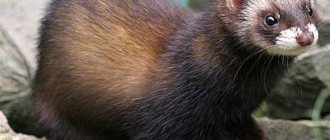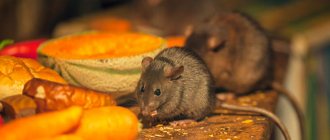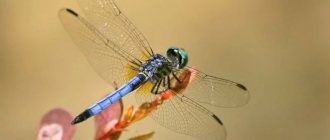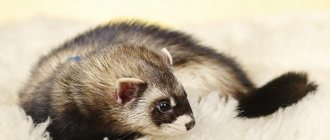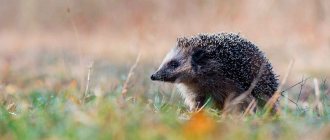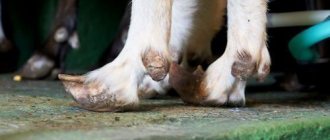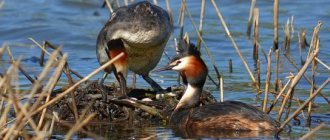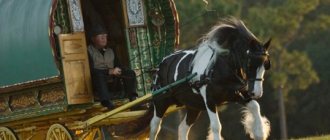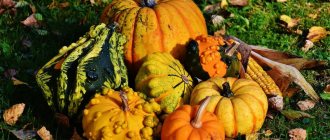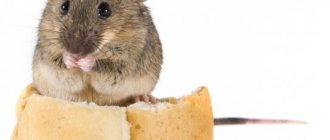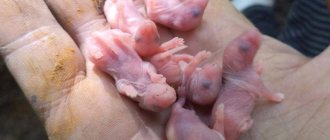The predatory family of mustelids includes a large number of phylogenetically related species, which differ quite significantly in body structure and lifestyle.
The predominant number of representatives are small and very small, there are, of course, medium ones, but there are not many of them. The body length of such animals ranges from fifteen to 120 (sometimes up to 150) cm. The weight of representatives varies from 100 grams to 40 kilograms. As a rule, their body is very elongated and quite flexible. A predator of the mustelid family with a short and massive body is a rather rare phenomenon.
Representatives of the family are distinguished by developed hair. In many species that live in the north in winter, it is very fluffy and thick. In the south, some representatives have a body covered with coarse, almost bristly hair. The colors can be different: spotted, plain, striped. It happens that there is an animal of the mustelid family whose fur is lighter underneath than on top. Depending on the season, representatives may change in thickness and fluffiness of fur. Some species change their color to snow-white in winter.
As a rule, all mustelids lead a terrestrial existence, climb trees well, some can dig quite deep burrows, and also get food from underground.
Mustelids are widespread. They are found on all continents except Australia.
The mustelidae family is one of the richest in the number of genera and species in the order of predators. It contains approximately 70 species, which are grouped into 25 genera and five subfamilies. The first of them is called martens. It includes approximately 33 species and ten genera.
Ermine
The ermine is similar in appearance to the weasel, with an average body length of 30 cm.
This animal is predatory and feeds on rodents. Sometimes it destroys nests. In times of hunger, it can eat frogs; if they are not available, then it eats garbage and juniper berries. It reproduces once a year, the duration of pregnancy is approximately 9.5 months. There is an average of five babies in a litter.
This representative is active at different times of the day.
Mustelidae family
There are many species of animals in the mustelidae family. Sometimes they are so different from each other that it is difficult to believe in their relationship. Mustelids include the tiny graceful ermine and the clumsy large wolverine, the steppe-dwelling black-footed ferret and the seafaring sea otter, the steeplejack marten and the underground city builder badger. An elongated flexible body and short legs are the main similarities of all mustelids.
Pine marten
The central figure of the family is the European pine marten. This is the most dexterous poison dart frog in the family. The marten hunts birds and squirrels in the treetops, and “rides,” that is, moves by jumping from tree to tree. The American marten is just as agile. Living in the cold northern forests, martens are dressed in thick and valuable fur.
The most valuable fur-bearing animal is our taiga resident, the sable. The sable, although it climbs trees well, stays mainly on the ground and hunts mice and voles, supplementing its meat menu with pine nuts. To the south of these mustelids, the stone marten lives in Eurasia. She has adapted to close proximity to humans and, in times of famine, visits chicken coops to steal chickens. It also helps people by destroying rodent pests in the fields.
In North America, a large fishing marten (pecan) lives in forests, among rocks and along river banks. Despite its name, this marten does not fish very often, preferring to hunt a variety of rodents, including the large American tree porcupine. Martens are such skilled hunters that they can easily cope with prey larger than themselves. Thus, the Asian marten Kharza, found from the cold forests of our Primorye to the jungles of Southeast Asia, is capable of defeating a young wild boar, a fawn, and a musk deer - a small deer.
Mink
European and American minks, similar to martens, are ground hunters. A long flexible body spreads along the ground, hiding the predator in snowdrifts or grass. Prey for minks and smaller inhabitants of the Asian woodland forests - mice, voles, chipmunks, muskrats, squirrels, birds, frogs. Minks and Siberians are excellent fishermen: having spotted fish from the shore, they dive under the water for it. In winter, fish is their main food.
Weasel and ermine
The weasel family also includes the smallest predators, the weasel and the stoat. The lizards themselves are slightly larger, they can easily cope with mice and even rabbits. There is no escape for the victims from the nimble pursuers who seep even into their narrow holes. By destroying rodents, stoats and weasels protect the harvest. Occupying the same ecological niche of small terrestrial predators, weasels and stoats do not live side by side. Weasels live slightly south of ermines, although they are no worse adapted to snow and frost: both species have warm, valuable fur, reddish in summer, white in winter.
Tyra and grison
Large martens, the tayra and the grison, live in the tropics of North and South America. Tyra runs fast, deftly climbs trees and is an excellent swimmer. Its prey is much larger than the prey of arboreal raccoons living in the same places. Taira hunts large agouti rodents, squirrels and possums (arboreal marsupials), and can even defeat a small mazama deer. The grison is smaller than the tayra - it has a very long and flexible body on short legs. It hunts rodents on the ground and lives in burrows.
Ferret
Ferrets are close to martens and minks. A ferret and a mink can even start a family and give birth to healthy babies; a cross between a ferret and a mink is called honoriki. Forest ferrets are found in the European part of our country: on forest edges, near rivers and even in city parks. They hide in piles of dead wood, under roots, in other people's empty holes, they settle in barns, attics, woodpiles, and stacks.
Previously, when cats were a curiosity in Rus', peasants kept ferrets at home so that they would destroy mice and rats. In the southern steppes, the forest polecat is adjacent to a larger brother - the steppe polecat. This is a valuable fur-bearing animal, but people, given its contribution to the destruction of rodents, have limited their hunting. Black-footed ferrets used to live in the American steppes and prairies. They hunted prairie dogs, rodents similar to gophers. But farmers, exterminating prairie dogs, also exterminated ferrets. Now they are bred in captivity.
Man is unfair to the ferret: this animal does more good than harm, because its main prey is voles and mice. Harmful rodents not only eat grain in the fields, but also make supplies for the winter, stuffing up to half a kilogram of seeds into underground storerooms. One ferret hunting in a field destroys 10-12 rodents per day, thus saving about a ton of grain over the summer.
Skunk
Skunks live in American forests, steppes and deserts. They look like ferrets, but are related to badgers. During the day, skunks sleep in holes and caves, and at night they catch insects, mice, frogs, and other small animals, look for fruits and seeds, and feast on garbage in villages. When in danger, the skunk bristles its fur, turns its back to the offender and raises its tail. If the threat has no effect, the skunk stands on its front legs, raising its butt, and throws a stream of stinking liquid at the enemy. Bright black and white fur warns predators from afar: “Don’t touch me, I’m stinky!” Striped and spotted skunks live in North America, and Patagonian skunks live in South America. Skunks living in cold regions go into hibernation for the winter, gathering several animals in one hole.
The bandage, African weasel and zorilla are taxonomically closer to ferrets, but similar to skunks. The contrasting coloring alerts predators to their ability to defend themselves by shooting out a foul-smelling liquid. These hunters of jerboas, ground squirrels, hamsters and other small animals live in the steppes and deserts: the bandage - in the south of Eurasia, the African weasel and zorilla - in Africa.
Ferrets and skunks are small animals. In order not to become prey to larger predators, they chose an original method of defense: to discourage their enemies' appetite with stench. Ferrets simply secrete a disgusting-smelling liquid from glands under their tail, and skunks can shoot a stream of this stinking and caustic liquid into the predator’s face at a distance of up to 3 m. A smeared and blinded enemy will forever remember the meeting with the stinky and will henceforth avoid it. Once the stink glands are removed, the skunk can be kept as a pet.
Badger
A massive body, a short thick neck, powerful paws with huge claws, coarse fur and a short tail - this is an ordinary badger, not much like graceful martens. An omnivorous animal living on earth does not need to be agile; it likes any food: fruits and roots, insects and bird eggs, worms, larvae, a gaping mouse, a frog, a lizard, carrion (dead animals). The badger is strong and does not have many enemies. Only terrible hunger pushes a bear or a wolf to fight a badger - after all, a blow from a badger’s clawed paw will leave deep wounds. But the badger needs its claws, first of all, for digging holes. Badger holes are underground labyrinths with many cozy “rooms”: bedrooms, children’s rooms, storage rooms, there are even toilets in the far reaches. The badger spends most of its life in the hole and hibernates there.
Common badgers live in Europe, from the taiga to the southern mountains and steppes, as well as in Siberian and Far Eastern forests, Japan, China, and Korea. They live in families: parents and several generations of their descendants. Their closest relative is the American badger, which inhabits the prairies of North America. It hunts for rabbits and prairie dogs by digging them out of holes. In the art of digging, American badgers are not inferior to their European “brothers”. But “Americans” are bad family men: they live alone, and the female raises her offspring alone.
The jungles of Southeast Asia are home to the teledu badger and the Palawan badger. With their long snouts, they rummage through the forest floor, digging out small living creatures, looking for roots and fallen fruits. The teledu is a large animal and can fend for itself, while the small Palawan badger defends itself like a skunk, throwing out a stinking stream in the face of the enemy. The neighbor of these badgers, the smallest of all, is the Burmese badger. Graceful and long-tailed, it resembles a ferret, for which it is also called the ferret badger. For his ability to deftly climb trees, hiding in their crowns, he was given a third name - tree badger.
Badger honey badger
In the savannas of Africa, in the steppes of Central and South Asia, lives the honey badger, a lover of honey from wild bees. The honey guide bird finds bees' nests for him. She flies to the honey badger and leads him to the hive. A badger uses its claws to destroy the bees’ home, eats honey and larvae, and the honey guide feasts on beeswax in a torn up hive. This is how the beast and the bird have been cooperating for centuries. The honey badger also feeds on lizards, turtles, beetles, and digs out small rodents from burrows. But he himself doesn’t know how to build good real “badger” holes.
Wolverine
Wolverine is a unique animal; there is no one in the mustelidae family who looks like it. Therefore, the wolverine was separated into a separate genus with a single species. Large and powerful, strong and resilient, the wolverine is also agile. These qualities help the animal survive in the harsh taiga and hunt even in freezing cold.
A vagabond and a loner, the wolverine roams its vast swathe of taiga in search of food. Its main food is carrion; it also eats the remains of the meals of wolves, bears and other large predators. Not finding easy money, the wolverine goes hunting. She does not waste energy catching mice and hares; her prey is large ungulates. It is difficult for her to cope with an adult healthy elk or red deer; she attacks young or weak animals. Wolverine jumps onto prey from a tree, grabs it and, gnawing its neck, kills a victim tens of times larger than itself.
Otter
In Eurasia and northern Africa, common otters live along the banks of forest rivers with clean water. These are large, strong, graceful animals, adapted for underwater hunting. The streamlined shape of the long flexible body resembles a torpedo, the muscular tail serves as an underwater rudder, the membranes between the toes turn short paws into flippers, the eyes see under water, and the warm fur does not get wet. Under water, the otter hunts fish, frogs, crayfish, and near the water it catches water voles, muskrats, and water birds. In a steep river bank, the otter makes a hole with an entrance under water, from which a vertical corridor leads upward to a dry nesting chamber, where the otter rests and raises its offspring. The underwater passage serves for safety - the land predator will not interfere, and the otters will not crawl out of the nest until they learn to swim.
Otters live solitary lives, protecting their large stretch of river. In winter, if the native river is frozen, the otter leaves to look for new feeding places. On land, it moves by comically rearranging its short legs, but thanks to its endurance, it can cover up to 20 km in the snow in a day. Spring is wedding season for otters. The offspring appear only after a year, and the female raises the babies alone. Otter cubs, from 2 to 4 babies, stay close to their mother for a long time, gradually mastering the techniques of underwater hunting.
The common otter and the similar Canadian otter have webbed toes that end in long, sharp claws that the otters use to grab slippery fish, their main prey. Clawless otters live in Asia and Africa. They feed on crabs and shellfish. You can’t grab a clam shell or a crab shell with your claws, and to feel this living creature in the river mud, you need sensitive fingers, without long claws that interfere with this delicate work.
The largest - the giant otter - lives in the tropical forests of South America, on the banks of the Amazon. These otters live in large families: a female, a male and children of different ages. They hunt during the day and, talking to each other, fill the area with loud cries.
Sea otter
Sea otters - sea otters - live on the sea coasts of Kamchatka and the Kuril Islands, as well as along the coast of North America in the North Pacific Ocean. With their short, whiskered muzzles, these mustelids resemble beaver rodents, which is why they are called sea beavers. Sea otters rarely go onto land and sleep on the water, lying on their backs. To prevent them from being carried away by the current, they wrap themselves in long seaweed, wrapping themselves comfortably in it, like in a blanket, and the seaweed serves them as an anchor. The habits of sea otters are reminiscent of humans: in their sleep, they fold their paws under their cheeks, like sleeping children, and languidly cover their eyes with their paws. In the water, sea otters are agile, but on the shore, where they are driven by a strong storm, they become funny and clumsy. Sea otters give birth to only one baby each, and this also happens in the sea. The baby spends his childhood swimming on his mother's chest. If the mother accidentally dies, the little sea otter will not be lost - some caring sea otter will take care of the orphan.
Sea otters are one of the few animals that actively use tools. Having obtained their usual food from the bottom - spiny sea urchins or mollusks, sea otters lie down on the water with their belly up and use stones to break the spiny shell of a urchin or a shell of a mollusk. They place the prey on a flat stone-anvil on the chest, and use another stone, like a hammer, to crush the shell of the prey. Sea otters store convenient pebbles under their arms so that the tool is always “at hand.”
See further: Cats
Ferrets
Ferrets are very close to the norm. There are three known types of them: steppe, blackfoot and black. The first is the largest, body length up to 56 cm, weight up to two kg. Slightly smaller black ferrets. Their body length is 48 cm and their weight is no more than 1.5 kg.
The main diet of all three species is rodents. The black ferret, as a rule, prefers mice and voles, while the steppe ferret prefers hamsters and gophers. Prairie dogs are what the Blackfeet prefer.
These representatives of the family (especially the steppe ones) live near lakes and rivers.
How to protect your chicken coop from predators
During winter hunger, all mustelids, if possible, settle near populated areas or right next to livestock buildings. The weasel is the most terrible predator for people, as it “cuts” birds or rabbits in reserve.
For security purposes, owners are recommended to install repellers with an ultrasonic signal or infrared radiation in chicken coops and barns. An excellent result is obtained by embedding a metal mesh into the wall with cement from 50 cm in height to the ground. The door is covered with iron.
Martens
Now we will talk about stone and pine martens. These animals are much larger than ferrets. The body length of the stone marten is on average 45 cm, and its weight is no more than 2.5 kg. Lesnaya is a little smaller. Its body length is on average 44 cm, and its weight ranges from 750 to 1500 grams. The body of martens is strong, slender, the ears are large and erect. The differences between these species are in the structure of the teeth and skull. A more southern species is the stone marten.
As the name implies, the forest one lives in forests littered with dark coniferous and mixed ones. Sometimes the stone one lives in such areas, but more often it can be seen on treeless rocky slopes. As a rule, they are active at night, although they can also be found during the day.
The pine marten eats rodents and sometimes hares. The stone one eats the same way, but in its diet the lion's share is occupied by plant foods. The rut occurs between June and August. An average of five babies are born per litter
How to distinguish animals when purchasing
All mustelids have a thin, very flexible, elongated body. They move in leaps and bounds and, if necessary, climb trees. But you can distinguish the animals. You need to pay attention to the color, size and relative length of the tail. Weasels and ferrets have small, round ears.
The marten is distinguished from them at first sight: the shape of its ears is completely different. Her ears have the most common form, like those of most animals: a tent with a sharp top. In weasels and ferrets, the top point of the ear, in the form of an even semicircle, rises quite a bit above the head.
See also
How to train a ferret to use a litter box at home and why he doesn’t go to his toiletRead
It would be impossible for an ordinary citizen to distinguish this couple if it were not for the small size of the weasel’s body in comparison with the size of its relative and the stable color characteristic of all representatives of the smallest predator on the planet. Red-brown top and snow-white bottom with a clearly visible division between the colors, without any shading or halftones.
Expert opinion
Zarechny Maxim Valerievich
Agronomist with 12 years of experience. Our best country expert.
Ask a Question
To determine the color of a domestic ferret, you need to take the list of colors described above, and then you can make sure that it is not complete. If the other characteristics match, the probability that this is the animal you are looking for tends to 100%.
The danger is that the weasel, due to its smaller size, can be passed off as a baby ferret. The danger signal is a brown back and light underparts, and in winter - a pure white color. An animal of the snow color you like does not have to be rejected. It can match the size of an adult ferret. It will be an albino with red eyes or a “snow white” with black eyes. In addition, if you pick up an animal and it turns out to be affectionate and calm, you are guaranteed to have found the right specimen. But being in a store or at a market is stressful for an animal, so color and size are the best guide.
Habitat
Despite the variety, they are all found throughout the Eurasian continent, North America, and also in northwest Africa. The steppe ferret prefers to live in open areas, and it is almost impossible to find it in crowded places, in forests, in the mountains, etc., but this animal is found in the steppes or semi-deserts of Mongolia, Kazakhstan, China, as well as in some regions of Asia and Europe.
Interesting fact! The fourth variety, bred artificially, cannot be found in the natural environment, since the animal has a fairly peaceful character. In addition, the ferret lacks hunting skills, which does not allow the animal to survive in the wild.
Black ferrets prefer to settle in forests, ravines, near bodies of water, as well as in populated areas, close to people. At the same time, they do not try to go far into the thicket, sticking to open forests, as well as the edges of the forest. The main habitat of the black ferret extends to Europe and part of Africa. The black-footed variety of ferrets prefers forested areas, as well as the prairies of North America, for their livelihoods. At the same time, the black-footed ferret can easily be found in the mountains, at an altitude of more than a thousand meters above sea level.
Types of traps for fishing
To understand how to get rid of weasels, you should familiarize yourself with a centuries-old method: setting a trap.
Traps of this kind are a very effective means of pest control. They are in an affordable price category: depending on the modification, the cost ranges from 400 to 1000 rubles. The following types of trace traps are used, which are the most common group:
- plate;
- frame.
Basically, they are fixed on the path trodden by the predator. There are 3 types of plate type:
- with internal spring;
- with cross;
- without cross.
The most universal among them is a trap with a cross.
Frame traps are also found in several varieties: The base of such traps can be:
- oval;
- round;
- rectangular.
They are used in conditions where catching an animal is quite problematic.
At the moment when the animal falls into the trap, the springs firmly fix its neck and paws, preventing it from moving. To catch weasels, frame options are mainly used, since compared to plate options designed for larger animals, they are smaller and more effective.
Signs of an uninvited guest
Weasels, like ferrets and martens, are inherently cautious; it is almost impossible to take them by surprise. The predator does not always start hunting right away; at first it can go on reconnaissance. Chickens sense the presence of this predator, and this is reflected in their behavior. The next morning it looks unusual: the chickens behave restlessly and try not to leave the house.
A clear sign that an animal visited the farmstead at night are unusual two-point tracks on the ground or snow. The distance between them will indicate the type of animal that attacked the chicken coop. The weasel leaves tracks with a distance of 200-300 mm, the marten - 300-400 mm, the ferret - 500-600 mm.
Natural enemies
Many of their natural enemies live in the same territory as ferrets, such as:
- Foxes and wolves that are capable of hunting ferrets, especially in winter, when they do not particularly have to choose victims for food.
- Birds of prey, in the form of night owls and golden eagles.
- Wild cats, for whom catching a ferret is not a problem at all.
- Large snakes, although they are not always able to cope with such a mobile animal.
An equally dangerous enemy of the ferret is humans, who cause serious harm to the population of these useful animals, not only exterminating them, but also surviving from their natural habitats.
Interesting fact! To protect itself from natural enemies, the ferret emits an unpleasant odor, which is generated by special glands located at the base of the tail.
As a result of human economic activity, populations of small animals that are part of the diet of these predators are declining, which threatens the existence of ferrets no less than other problems.
